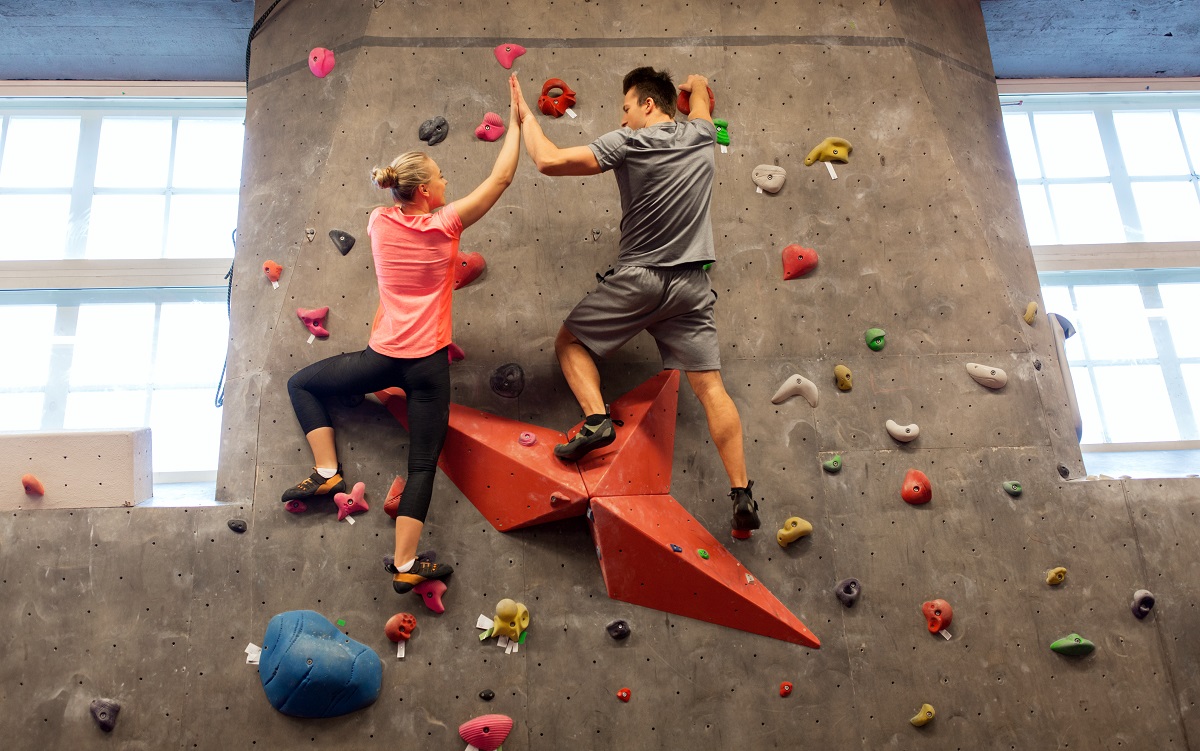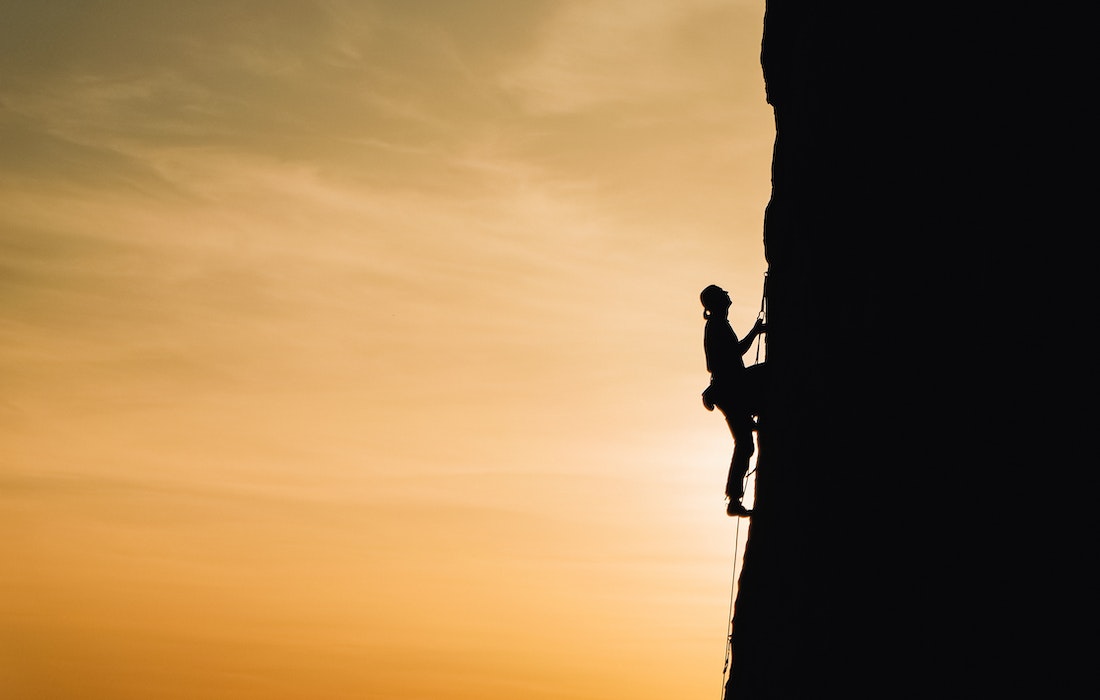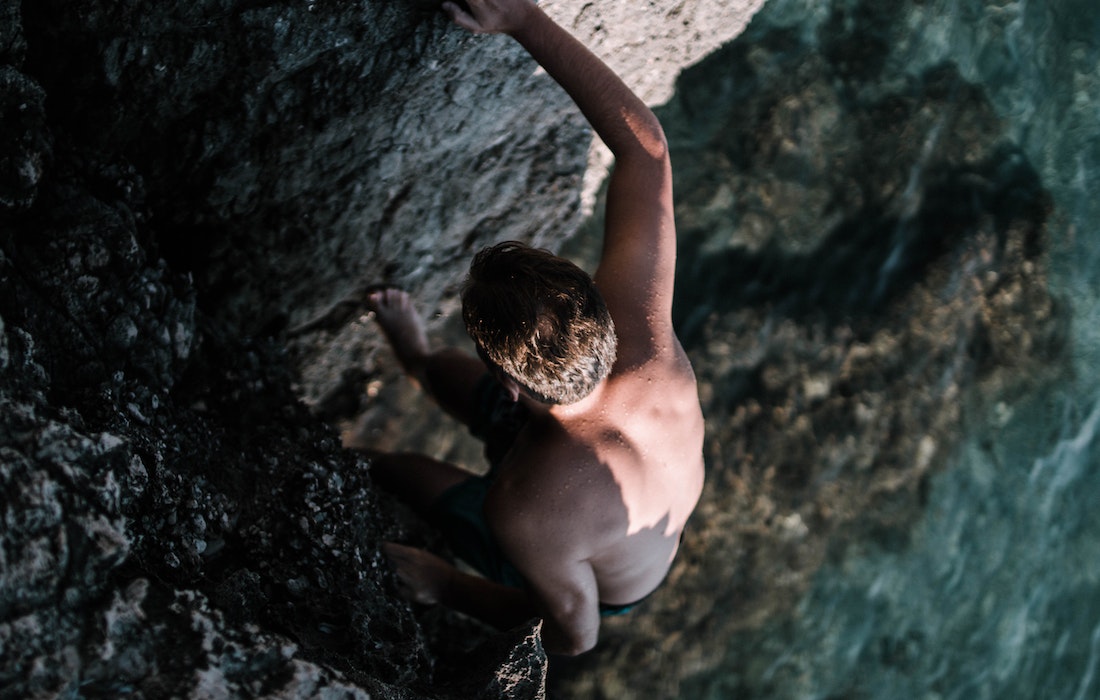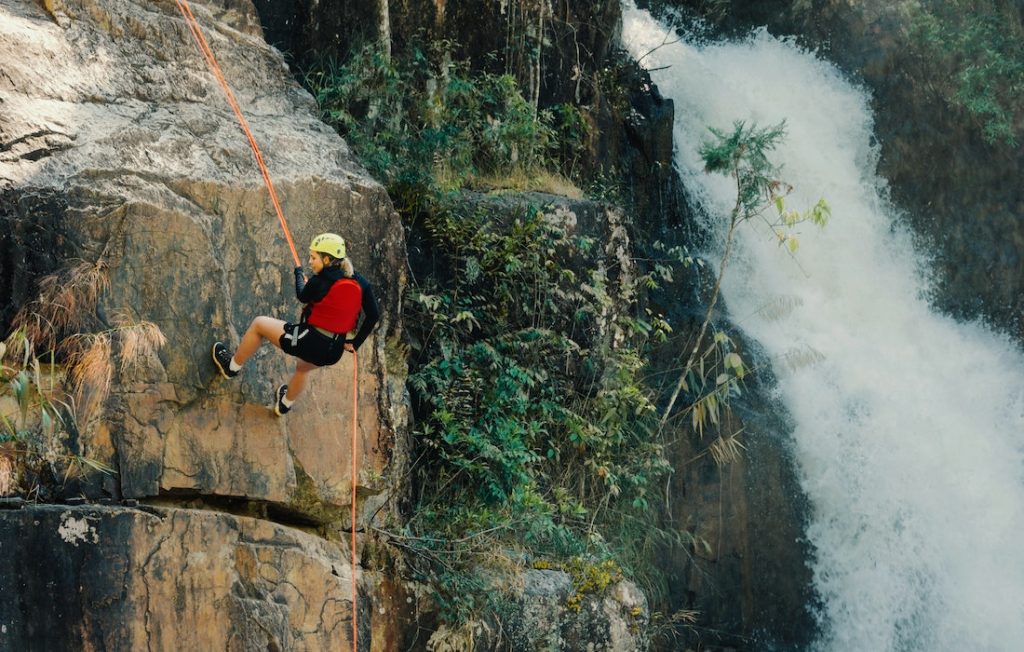Rock climbing has surged in popularity, captivating enthusiasts worldwide. In 2020, the global climbing market scaled impressive heights, boasting an approximately $581.2 million valuation. This exhilarating sport combines physical prowess with mental acumen, offering a thrilling challenge for adventurers.
While rock climbing can be a thrilling hobby, it demands more than sheer determination. Mastery requires endurance, technique, and a deep understanding of climbing principles. This guide will delve into the art of climbing, offering valuable insights on how to get better at rock climbing, ensuring you ascend with confidence, skill, and safety.
How To Get Better at Rock Climbing
Identify Your Strengths and Weaknesses as a Climber
To excel in rock climbing, a crucial first step is a comprehensive self-assessment. Identifying your strengths and weaknesses as a climber lays the foundation for targeted improvement. Begin by recognizing your natural abilities, such as upper body strength, balance, or flexibility. These strengths can serve as assets in specific climbing styles or situations.
Conversely, acknowledging your weaknesses is equally important. It might be a fear of heights, limited finger strength, or difficulties with specific techniques. You can tailor your training regimen to address these areas directly by pinpointing them. Seek feedback from climbing partners or instructors to gain external perspectives.
Create a personalized training plan once you’ve compiled your strengths and weaknesses. Focus on strengthening your weaknesses while leveraging your strengths to your advantage. Regularly revisiting and adapting this assessment ensures continuous growth, helping you become a well-rounded climber.
Set Realistic Goals
Rock climbing is a journey of progress, and setting realistic goals is instrumental in guiding your advancement. Begin by defining clear and achievable objectives. These could range from conquering a specific route or grade to improving your endurance or mastering a particular climbing technique.
Realistic goals are essential for motivation and tracking your development. Avoid setting too ambitious or vague goals, as they may lead to frustration. Instead, break down larger goals into smaller, manageable milestones. For example, if you aim to climb a challenging route, focus on improving your grip strength, technique, and endurance in smaller increments.
Regularly reassess and adjust your goals as you progress. Celebrate each accomplishment, no matter how minor, to maintain enthusiasm and momentum. Additionally, sharing your goals with climbing partners or coaches can provide valuable support and accountability on your journey to becoming a better climber.
What are some essential rock climbing techniques to master?
Basic Climbing Techniques: Footwork, Handholds, and Body Positioning
- Footwork: Efficient foot placement is fundamental. Focus on using the edges of your climbing shoes to grip holds securely. Precise footwork minimizes energy expenditure and maximizes balance.
- Handholds: Develop a keen sense of handhold selection. Look for positive holds (jugs) and plan your route accordingly. Use a variety of grips, including crimps, slopers, and pockets, to adapt to different holds.
- Body Positioning: Proper body positioning is key to conserving energy. Keep your hips close to the wall, align your body with holds, and engage your core for stability. Anticipate moves and adjust your body accordingly to maintain balance and control.
Advanced Techniques: Smearing, Flagging, and Dynos
- Smearing: Smearing involves using the friction of your climbing shoes on the wall when no holds are available. Press your feet against the wall to create stability. Trust your shoes and body weight distribution.
- Flagging: Flagging is a technique for maintaining balance. Extend one leg to counterbalance your body’s movement and prevent swinging. It helps you reach holds or maintain stability on tricky routes.
- Dynos: Dynamic moves (dynos) involve leaping from one hold to another. Generate power from your legs and core, coordinating with a precise release of your handholds. Practice control and accuracy to master this advanced technique, which is essential for tackling challenging routes.
Training and Conditioning for Climbing
Building Climbing-Specific Strength and Endurance

Climbing demands a unique blend of physical attributes, and a well-rounded training program is vital for improvement. Focus on exercises that mimic climbing movements to build climbing-specific strength and endurance. Incorporate hangboard workouts, campus board training, and bouldering sessions to target specific muscle groups and improve your climbing-specific strength.
Hangboard workouts involve hanging from various grips to develop finger strength and forearm endurance. Gradually increase the intensity and duration of hangs over time. Campus board training helps build explosive power and dynamic climbing abilities. Carefully progress through exercises on the campus board to avoid overuse injuries.
Additionally, incorporate endurance training through sustained climbing sessions or traversing exercises. Long routes or traverses simulate the continuous effort required during climbing, enhancing your stamina and overall climbing fitness. Remember to maintain a balanced training schedule that includes rest days to allow your body to recover and prevent overtraining.
Incorporating Core and Finger Strength Workouts
Core and finger strength are two critical components of climbing fitness. A strong core provides stability and balance while executing challenging moves, and finger strength is crucial for gripping holds effectively. Incorporate core and finger strength workouts into your training regimen to enhance your climbing performance.
For core strength, exercises like leg raise, planks, and Russian twists target your abdominal and oblique muscles. A strong core allows you to control your body’s positioning on the wall, reducing unnecessary strain on your arms.
Finger strength can be developed through hangboard workouts, campus board exercises, and finger-specific exercises like finger rolls or grip trainers. These workouts improve finger endurance and grip strength, allowing you to hold onto smaller holds for longer.
Remember to gradually increase the intensity and frequency of these workouts to avoid overuse injuries. A well-balanced training plan that includes core and finger strength will contribute significantly to your climbing success by providing the necessary stability and grip strength for challenging routes.
Mental Preparation and Focus on the Wall

Overcoming Fear and Building Confidence in Climbing
Fear is common in climbing, especially as you tackle more challenging routes. Overcoming it and building confidence is essential for your progress. Start by understanding and acknowledging your fears. Identify the specific aspects of climbing that trigger anxiety, whether it’s heights, falling, or challenging moves.
To conquer these fears, gradually expose yourself to them in controlled environments. Begin with lower-height climbs or routes within your comfort zone and gradually progress to more challenging ones. Trust in your gear and the safety measures in place, and remember that falling is a part of climbing.
Building confidence also involves celebrating small victories. Each successful climb, no matter how minor, contributes to your self-assurance. Additionally, surrounding yourself with supportive climbing partners and seeking mentorship can provide invaluable encouragement.
Developing a Positive Mindset and Visualization Techniques
A positive mindset is a powerful ally in climbing. It can improve focus, reduce anxiety, and enhance your overall performance. Practice mindfulness and positive self-talk. Be aware of negative thoughts and replace them with constructive affirmations.
Visualization is another effective technique. Before attempting a route, mentally rehearse each move and visualize a successful ascent. This not only boosts confidence but also improves muscle memory and decision-making on the wall.
Controlled breathing can help manage stress and anxiety during climbs. Deep, rhythmic breathing can help you stay calm and focused, especially when facing difficult sections.
Lastly, stay adaptable and maintain a growth mindset. Embrace challenges as opportunities for growth and learning. By developing a positive mindset and honing visualization techniques, you’ll find yourself more in control, confident, and prepared to tackle even the most demanding climbs.
Climbing With Partners and Seeking Feedback
Benefits of Climbing With Experienced Partners
Climbing with experienced partners offers many advantages for climbers of all skill levels. First and foremost, safety is significantly enhanced when climbing with someone who possesses knowledge of proper techniques, gear usage, and rescue procedures. They can provide guidance and ensure you’re making safe decisions on the wall.
Experienced partners also offer valuable mentorship. They can share insights, tips, and tricks learned from their own climbing experiences, helping you avoid common pitfalls and accelerate your progress. Their advice may extend to route reading, strategy, and efficient movement on the wall.
Additionally, climbing with partners can boost motivation and camaraderie. Sharing the climbing experience creates a sense of community and can push you to attempt routes you might otherwise avoid.
Moreover, having a belay partner means you can take on more challenging climbs that require a belayer, expanding the range of routes you can explore. In sum, climbing with experienced partners fosters safety, learning, motivation, and a stronger sense of belonging within the climbing community.
Giving and Receiving Constructive Feedback for Improvement
Constructive feedback is a cornerstone of improvement in climbing. Giving and receiving feedback are pivotal in refining your skills and technique. When providing feedback, be specific and objective. Focus on observed actions rather than making personal judgments.
Receiving feedback graciously is equally essential. Approach it with an open mind and a willingness to learn. Understand that feedback is meant to help you improve, not criticize. Avoid becoming defensive and instead ask for clarification or suggestions for improvement.
Regularly seeking feedback can pinpoint areas where you can make tangible progress. It may encompass climbing techniques, route reading, or even gear selection. Constructive criticism often reveals blind spots that can be addressed through focused practice.
Climbing partners can benefit greatly from a culture of constructive feedback, as it promotes continuous growth, mutual support, and safer climbing experiences. Embracing this feedback loop is integral to becoming a better climber and fostering a positive climbing community.
Should you explore different types of climbing to enhance your skills?
Yes, exploring different types of climbing is highly beneficial for skill enhancement. Each climbing discipline offers unique challenges and opportunities for growth. Bouldering, sport climbing, and traditional climbing, in particular, provide distinct experiences that can complement one another and make you a more versatile climber.
Bouldering, Sport Climbing, and Traditional Climbing
- Bouldering: Bouldering focuses on short, powerful routes with intense moves. It sharpens your strength, technique, and problem-solving skills. Bouldering is an excellent way to improve your dynamic movements, grip strength, and balance. It’s also a great starting point for beginners to build foundational climbing skills.
- Sport Climbing: Sport climbing emphasizes endurance, route reading, and lead climbing skills. It challenges you to manage longer routes, make efficient decisions, and maintain stamina. Sport climbing can enhance your mental resilience and ability to strategize while ascending.
- Traditional Climbing: Trad climbing involves placing your own protection, such as cams and nuts, as you ascend. It demands advanced technical skills, including gear placement, anchor building, and route-finding. Trad climbing hones your self-reliance, decision-making under pressure, and overall climbing proficiency.
Exploring these different disciplines broadens your climbing repertoire, enhances your adaptability, and fosters a deeper understanding of climbing techniques and strategies. It also allows you to enjoy diverse climbing experiences in various outdoor environments.
How To Prevent and Treat Climbing Injuries
Preventing and treating climbing injuries is paramount for maintaining a long and fulfilling climbing career. Here are key strategies:
Prevention:
- Proper Warm-up: Prior to each session, commence with a dynamic warm-up to enhance blood circulation, loosen muscles, and prime your body for climbing-specific movements.
- Gradual Progression: Avoid rapid increases in intensity or difficulty. Gradually advance to harder routes and higher grades to give your body time to adapt.
- Technique Focus: Emphasize good climbing technique to reduce unnecessary strain on your body. Efficient movement minimizes the risk of overuse injuries.
- Strength Training: Include targeted strength training exercises to build muscles around injury-prone areas like shoulders and fingers. Balance is crucial.
- Rest and Recovery: Allow adequate time for recovery between climbing sessions. Rest helps muscles heal and prevents overuse injuries.
Treatment:
- RICE Method: Rest, Ice, Compression, and Elevation are initial steps for acute injuries to reduce swelling and pain.
- Seek Professional Help: Consult a healthcare professional or sports therapist for a proper diagnosis and treatment plan.
- Physical Therapy: Follow prescribed exercises and physical therapy routines to regain strength and mobility.
- Rest and Rehab: Allow sufficient time for recovery before returning to climbing. Rushing back can worsen injuries.
- Prevention Maintenance: After recovery, focus on injury prevention through strength training, stretching, and technique improvement.
Remember that listening to your body and addressing minor issues promptly can prevent them from becoming more severe, ensuring a safer and more enjoyable climbing experience.
Frequently Asked Questions
How do I get stronger at rock climbing?
To get stronger at rock climbing, focus on consistent training, including strength workouts, climbing-specific exercises, and regular climbing practice. Prioritize finger and core strength, and set progressive goals to track your improvement.
How do beginners train for rock climbing?
Beginners should start with climbing fundamentals: technique, grip strength, and endurance. Practice regularly, take lessons, and gradually increase difficulty. Incorporate strength training, flexibility, and rest for a balanced approach.
Can you rock climb if you’re weak?
Yes, rock climbing is accessible for beginners with varying levels of strength. Technique, skill development, and consistent training can compensate for initial weakness, allowing gradual improvement in strength and climbing ability.
Can I learn rock climbing by myself?
While it’s possible to learn the basics of climbing alone, safety is paramount. It’s strongly recommended to start with a qualified instructor or experienced mentor to ensure proper technique and safety knowledge.
Does weight matter in rock climbing?
Yes, weight can impact climbing performance. Maintaining a healthy weight relative to your body type can improve strength-to-weight ratio, aiding in climbing. However, technique, endurance, and skill are also crucial factors.

